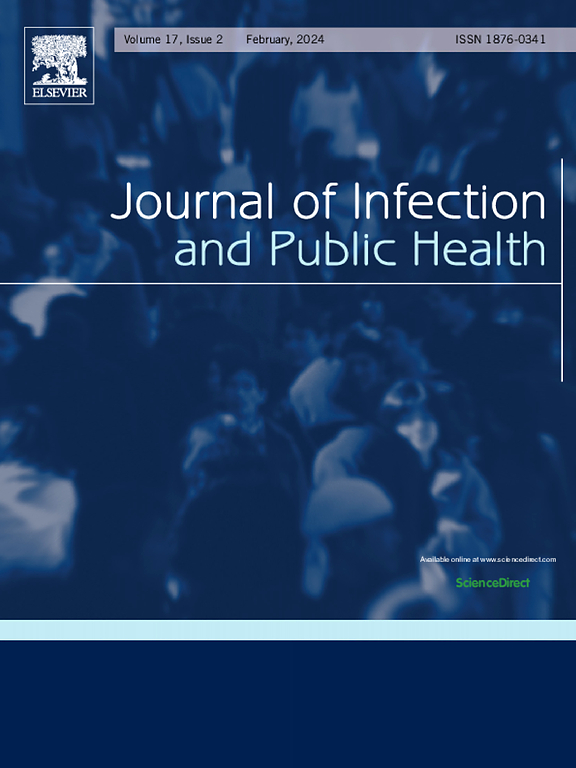法国妇女对HPV自我抽样的看法和偏好:法国CapU4试验中的问卷调查
IF 4.7
3区 医学
Q1 INFECTIOUS DISEASES
引用次数: 0
摘要
尽管自2018年以来,针对筛查不足的妇女开展了有组织的筛查工作,但法国宫颈癌(CC)筛查覆盖率仍然适中(60% %)。hpv筛查的目标年龄是30-65岁的女性。阴道自我抽样(VSS)最近被引入到没有接受过筛查的妇女中。本研究评估了参加CapU4试验的女性对HPV自我抽样的看法和偏好。方法scapu4是一项随机对照试验,有两个实验组(邮寄尿液自采样(USS)或VSS试剂盒)和一个对照组(邮寄传统邀请函)。该试验邀请了1.5万名年龄在30-65岁之间的女性,她们在4年多的时间里没有进行过筛查测试,而且在12个月内没有回复邀请函。每组中随机选择一半的女性接受补充问卷(于2023年3月发送,直到2023年8月收集回复)。结果共分析问卷682份,回复率为9.1 %。大多数女性认为自我抽样说明清楚(VSS 87.4% %,us90.7 %),程序简单(VSS 85.9% %,us90.3 %)。大约23.5% %的VSS用户和4.9% %的USS用户对这个过程感到不愉快。大约80% %的SS组参与者更喜欢在家里做样本,而不是去卫生保健专业人员那里做宫颈筛查。他们还表示,他们更倾向于使用自采样试剂盒收集样本,以用于下一次CC筛查,而不是访问卫生保健专业人员(VSS 82.6 %,us89.1 %)。结论:对于未参加常规CC筛查计划的女性,自取样似乎是一种很受欢迎的选择。本文章由计算机程序翻译,如有差异,请以英文原文为准。
Women’s perceptions and preferences toward HPV self-sampling in France: A questionnaire within the French CapU4 Trial
Background
Despite organised screening efforts since 2018 targeting under-screened women, cervical cancer (CC) screening coverage remains moderate (60 %) in France. The target age for HPV-based screening is women aged 30–65. Vaginal self-sampling (VSS) has recently been introduced for women who have not been screened. This study assesses women’s perceptions and preferences toward HPV self-sampling among women enrolled in the CapU4 trial.
Methods
CapU4 is a randomised controlled trial with two experimental arms (mailing either a urine self-sampling (USS) or VSS kit) and a control arm (mailing of a conventional invitation letter). The trial invited 15,000 women aged 30–65, who had no screening test recorded since more than four years and who did not respond to an invitation letter within 12 months before. Half of the women in each arm were randomly selected to receive a supplementary questionnaire (sent in March 2023, with responses collected until August 2023).
Results
In total, 682 completed questionnaires were analysed (9.1 % response rate). Most women found self-sampling instructions clear (VSS 87.4 %, USS 90.7 %) and procedures easy (VSS 85.9 %, USS 90.3 %). About 23.5 % of VSS users and 4.9 % of USS users found the process unpleasant. Around 80 % of participants in both SS arms preferred taking a specimen at home rather than going to a health care professional for cervical screening. They also indicated a preference for using self-sampling kit to collect a sample for their next CC screening instead of visiting a health care professional (VSS 82.6 %, USS 89.1 %).
Conclusion
Self-sampling appears to be a well-received alternative in women not attending routine CC screening programme.
求助全文
通过发布文献求助,成功后即可免费获取论文全文。
去求助
来源期刊

Journal of Infection and Public Health
PUBLIC, ENVIRONMENTAL & OCCUPATIONAL HEALTH -INFECTIOUS DISEASES
CiteScore
13.10
自引率
1.50%
发文量
203
审稿时长
96 days
期刊介绍:
The Journal of Infection and Public Health, first official journal of the Saudi Arabian Ministry of National Guard Health Affairs, King Saud Bin Abdulaziz University for Health Sciences and the Saudi Association for Public Health, aims to be the foremost scientific, peer-reviewed journal encompassing infection prevention and control, microbiology, infectious diseases, public health and the application of healthcare epidemiology to the evaluation of health outcomes. The point of view of the journal is that infection and public health are closely intertwined and that advances in one area will have positive consequences on the other.
The journal will be useful to all health professionals who are partners in the management of patients with communicable diseases, keeping them up to date. The journal is proud to have an international and diverse editorial board that will assist and facilitate the publication of articles that reflect a global view on infection control and public health, as well as emphasizing our focus on supporting the needs of public health practitioners.
It is our aim to improve healthcare by reducing risk of infection and related adverse outcomes by critical review, selection, and dissemination of new and relevant information in the field of infection control, public health and infectious diseases in all healthcare settings and the community.
 求助内容:
求助内容: 应助结果提醒方式:
应助结果提醒方式:


